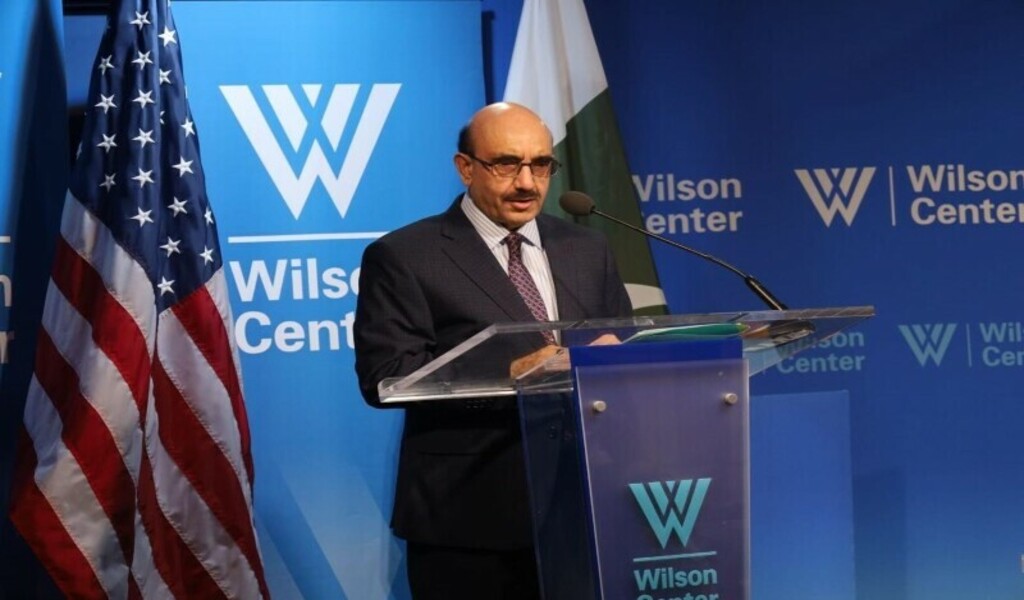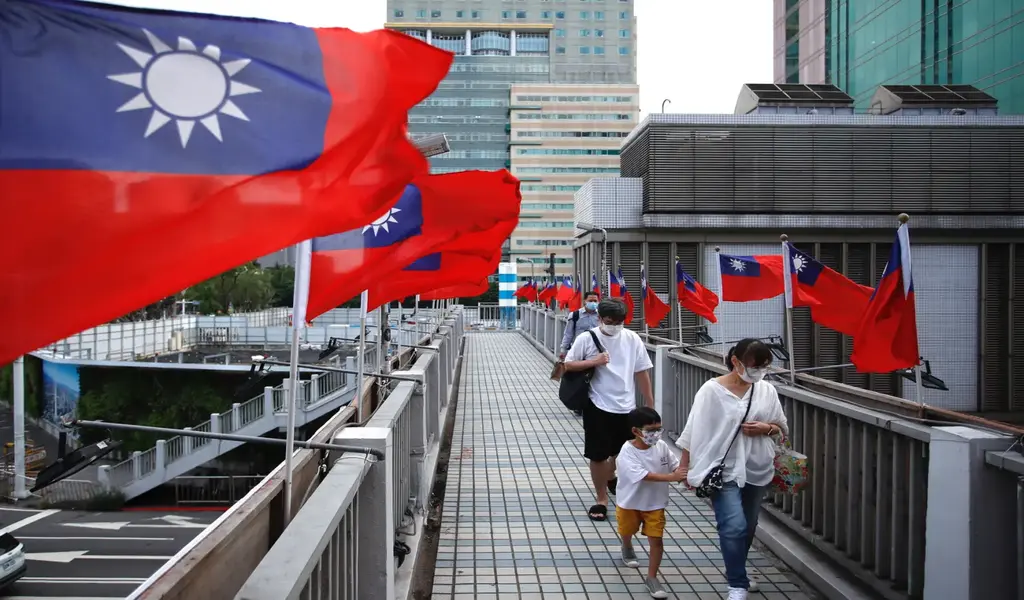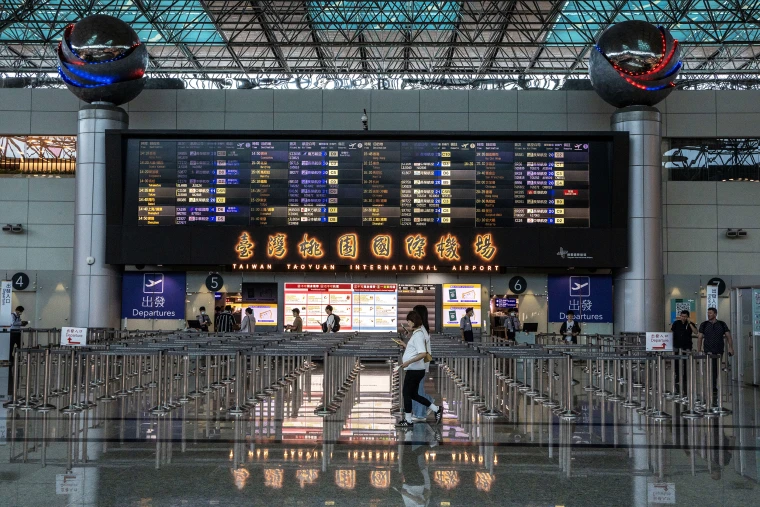World News
China Rushes to Build Floating Nuclear Reactors

China is planning to build a floating nuclear power station as it seeks to double its atomic capacity by 2020, a senior official said on Wednesday
.
.
.
BEIJING – China’s ambitions to become a pioneer in nuclear energy are sailing into troubled waters, as two state-owned companies plan to develop floating nuclear reactors, a technology engineers have been considering since the 1970s for use by oil rigs or island communities.
Beijing is racing Russia, which started developing its own in 2007, to get a unit into commercial operation.
In China’s case, the achievement would be tempered by concern its reactors might be sent into harm’s way to support oil exploration in the South China Sea, where Beijing faces conflicting territorial claims by neighbors including Vietnam and the Philippines. Chinese news reports say plans call for deploying 20 reactors there, though neither developer has mentioned the area.

The Akademik Lomonosov, a floating nuclear power station, is launched at Baltiyskiy shipyard in St. Petersburg
.
Tensions ratcheted up after a U.N. arbitration panel ruled July 12 that Beijing’s claim to most of the sea has no legal basis. Beijing rejected the decision in a case brought by the Philippines and announced it would hold war games in the area, where its military has built artificial islands.
The floating reactor plans reflect Beijing’s determination to create profitable technologies in fields from energy to mobile phones and to curb growing reliance on imported oil and gas, which communist leaders see as a security risk.
China is the most active builder of nuclear power plants, with 32 reactors in operation, 22 under construction and more planned. It relies heavily on U.S., French and Russian technology but is developing its own.
The latest initiatives are led by China General Nuclear Power Group and China National Nuclear Corp. Both have research or consulting agreements with Westinghouse Electric Co. and France’s EDF and Areva, but say their floating plants will use homegrown technology.
“They are keen to develop that because they have a lot of oil drilling everywhere in the South China Sea and overseas as well,” said Luk Bing-lam, an engineering professor at the City University of Hong Kong who has worked with a CGN subsidiary on unrelated projects.
.
“The Chinese strategy is to ensure the energy supply for the country,” said Luk. “Oil drilling needs energy, and with that supply, they could speed up operations.”
Russia’s first floating commercial reactor, the Academician Lomonosov, is due to be delivered in 2018, but the project has suffered repeated delays. The Russians have yet to announce a commercial customer.
Russia has been “aiming to launch this idea for over two decades by pitching the reactor as a plug-and-play option for fairly remote communities,” said Mark Hibbs, an expert on nuclear policy for the Carnegie Endowment for International Peace, in an email.
Russia’s target market was Indonesia and its far-flung islands, Hibbs said. That prompted concern about control over nuclear materials, leading to a recommendation Russia operate the reactor and take back used fuel.
The Chinese nuclear agency signed a deal with Moscow in 2014 to build floating power stations using Russian technology. It is unclear whether that will go ahead given the plans by CNG and CNNC to develop their own vessels.
Chinese developers can count on sales to the state-owned oil industry without going abroad.
CGN has signed a contract with China National Offshore Oil Corp. to support oil and gas exploration at sea. The company says it will launch its first vessel by 2020, with plans for 20 more. It declined an interview request and did not respond to written questions.
CNNC plans a demonstration unit by 2019.
A floating nuclear plant probably would be too costly just to supply power but could be useful in oil and gas exploration by also providing heat and fresh water, Luk said. He said CGN engineers told him their design is meant for islands or other remote sites.
Tensions with Vietnam have flared over Chinese oil and gas exploration near the Vietnamese coast. In January, Vietnam complained a Chinese oil company had towed a drilling rig into disputed waters. In 2014, the same rig was parked off Vietnam’s central coast for two months, leading to violent anti-Chinese demonstrations and confrontations at sea as Chinese vessels rammed Vietnamese boats to prevent them from approaching the rig.
Reactors have been used on warships since the 1950s. But those vessels regularly visit port for maintenance and face little security risk because they are heavily armed.
“The security concerns are clear: such reactors would be tempting targets for military or terrorist attacks,” Edwin Lyman, a nuclear specialist for the Union of Concerned Scientists in Washington, said in an email. “Maintaining the full contingent of security officers necessary to effectively deter attack would not be feasible.”
Other perils include stormy seas – the South China Sea is buffeted by powerful seasonal typhoons – and the need to exchange radioactive fuel at distant sites.
CGN says its seaborne unit will have “passive safety,” or features that function without moving parts or outside power, such as control rods that drop by gravity in an emergency. No commercial reactor operates with such features.
“There are questions about how reliable passive safety systems will be in extreme conditions,” Lyman said.
CGN wants to simplify operations by requiring refueling only once every three years instead of the industry standard of 18 months, Luk said. That would require more highly enriched fuel, with the amount of the U-235 isotope raised to as much as 10 percent from the typical 4.5 percent.
“If it were seized by terrorists or someone else, that would be a big problem,” he said.
China’s aggressive pursuit of nuclear technology has run afoul of U.S. law enforcement.
In April, a Chinese-born American engineer employed by CGN was charged with recruiting experts in the United States to help the company with reactor construction without applying for required government permission. Allen Ho, also known as Szuhsiung Ho, also was charged in federal court in Tennessee with acting illegally as an agent of a foreign government.
Under a 2007 agreement, Westinghouse transferred to another government company, the State Nuclear Power Technology Corp., technology for its latest model, the AP1000. It was to become the basis for future Chinese reactors that could be sold abroad, but CGN and CNNC pressed ahead with development of their own models.
CGN says its 60-megawatt floating reactor, the ACPR50, is a version of the land-based ACPR100 reactor. CNNC says its seaborne unit will be based on another reactor, the ACP100, but has released no other details.
Westinghouse has no role in the ACPR50’s development, according to a company spokeswoman, Courtney Boone. EDF and Areva did not respond to requests for information about their possible role.
—
Follow Joe McDonald:
http://bigstory.ap.org/content/joe-mcdonald
World News
Marine Le Pen’s National Rally Wins the First Round in France 2024 Election

Exit polls in France showed that Marine Le Pen’s right-wing National Rally (RN) party made huge gains to win the first round of election on Sunday. However, the final outcome will depend on how people trade votes in the days before next week’s run-off.
Exit polls from Ipsos, Ifop, OpinionWay, and Elabe showed that the RN got about 34% of the vote. This was a big loss for President Emmanuel Macron, who called the early election after his party lost badly in the European Parliament elections earlier this month.
The National Rally (RN) easily won more votes than its opponents on the left and center, including Macron’s Together group, whose bloc was predicted to get 20.5% to 23% of the vote. Exit polls showed that the New Popular Front (NFP), a hastily put together left-wing alliance, would get about 29% of the vote.
The results of the exit polls matched what people said in polls before the election, which made Le Pen’s fans very happy. But they didn’t say for sure if the anti-immigrant, anti-EU National Rally (RN) will be able to “cohabit” with the pro-EU Macron in a government after the runoff election next Sunday.
Voters in France Angry at Macron
Many French people have looked down on the National Rally (RN) for a long time, but now it is closer to power than it has ever been. A party known for racism and antisemitism has tried to clean up its image, and it has worked. Voters are angry at Macron, the high cost of living, and rising concerns about immigration.
Fans of Marine Le Pen waved French flags and sang the Marseillaise in the northern French district of Henin-Beaumont. The crowd cheered as Le Pen said, “The French have shown they are ready to turn the page on a power that is disrespectful and destructive.”
The National Rally’s chances of taking power next week will rest on what political deals its opponents make in the next few days. Right-wing and left-wing parties used to work together to keep the National Rally (RN) out of power, but the “republican front,” which refers to this group, is less stable than ever.
If no candidate gets 50% of the vote in the first round, the top two candidates and anyone else with 12.5% of the registered voters immediately move on to the second round. The district goes to the person who gets the most votes in the runoff.
France is likely to have a record number of three-way runoffs because so many people voted on Sunday. Experts say that these are much better for the National Rally (RN) than two-way games. Almost right away on Sunday night, the horse trade began.
Macron asked people to support candidates who are “clearly republican and democratic.” Based on what he has said recently, this would rule out candidates from the National Rally (RN) and the hard-left France Unbowed (LFI) party. Leaders on the far left and the center left both asked their third-placed candidates to drop out.
Minority government
Jean-Luc Melenchon, leader of France Unbowed, said, “Our rule is simple and clear: not a single more vote for the National Rally.” But the center-right Republicans party, which split before the vote when some of its members joined the RN, didn’t say anything.
The president of the RN party, Jordan Bardella, who is 28 years old, said he was ready to be prime minister if his party gets a majority of seats. He has said he won’t try to make a minority government, and neither Macron nor the communist NFP will work with him.
“I will be a “cohabitation” Prime Minister, respectful of the constitution and of the office of President of the Republic, but uncompromising about the policies we will implement,” he said.
A few thousand anti-RN protesters met in Paris’s Republique square on Sunday night for a rally of the leftist alliance. The mood was gloomy.
Niya Khaldi, a 33-year-old teacher, said that the RN’s good results made her feel “disgust, sadness, and fear.”
“This is not how I normally act,” she said. “I think I came to reassure myself, to not feel alone.”
Election Runoff
The result on Sunday didn’t have much of an effect on the market. In early Asia-Pacific trade, the euro gained about 0.23%. Fiona Cincotta, a senior markets expert at City Index in London, said she was glad the outcome “didn’t come as a surprise.”
“Le Pen had a slightly smaller margin than some of the polls had pointed to, which may have helped the euro a little bit higher on the open,” she noted. “Now everyone is waiting for July 7 to see if the second round supports a clear majority or not. So it does feel like we’re on the edge of something.”
Some pollsters thought the RN would win the most seats in the National Assembly, but Elabe was the only one who thought the party would win all 289 seats in the run-off. Seat projections made after the first round of voting are often very wrong, and this race is no exception.
On Sunday night, Reuters reported there were no final results for the whole country yet, but they were due in the next few hours. In France, exit polls have usually been very accurate.
Voter turnout was high compared to previous parliamentary elections. This shows how passionate people are about politics after Macron made the shocking and politically risky decision to call a vote in parliament.
Mathieu Gallard, research head at Ipsos France, said that at 1500 GMT, nearly 60% of voters had turned out, up from 39.42% two years earlier. This was the highest comparable turnout since the 1986 legislative vote. It wasn’t clear when the official number of people who voted would be changed.
World News
Pakistan Seeks US Support for Counter-Terrorism Operation Azm-e-Istehkam

(CTN News) – Pakistan’s Ambassador to the United States, Masood Khan, has urged Washington to provide Pakistan with sophisticated small arms and communication equipment to ensure the success of Operation Azm-e-Istehkam, a newly approved counter-terrorism initiative in the country.
The federal government recently approved the reinvigorated national counter-terrorism drive, which comprises three components: doctrinal, societal, and operational.
Ambassador Khan noted that work on the first two phases has already begun, with the third phase set to be implemented soon.
Addressing US policymakers, scholars, and corporate leaders at the Wilson Center in Washington, Khan emphasized the importance of strong security links, enhanced intelligence cooperation, and the resumption of sales of advanced military platforms between Pakistan and the US.
He argued that this is crucial for regional security and countering the rising tide of terrorism, which also threatens the interests of the US and its allies.
“Pakistan has launched Azm-i-Istehkam […] to oppose and dismantle terrorist networks. For that, we need sophisticated small arms and communication equipment,” said Ambassador Khan.
Pakistan–United States relations
The ambassador observed that the prospects of Pakistan-United States relations were bright, stating that the two countries “share values, our security and economic interests are interwoven, and it is the aspiration of our two peoples that strengthens our ties.”
He invited US investors and businesses to explore Pakistan’s potential in terms of demographic dividend, technological advancements, and market opportunities.
Khan also suggested that the US should consider Pakistan as a partner in its diplomatic efforts in Kabul and collaborate on counterterrorism and the rights of women and girls in Afghanistan.
He stressed that the bilateral relationship should be based on ground realities and not be hindered by a few issues.
“We should not base our engagement on the incongruity of expectations.
Our ties should be anchored in ground realities, even as we aim for stronger security and economic partnerships. Secondly, one or two issues should not hold the entire relationship hostage,” said the ambassador.
World News
China Urges Taiwanese to Visit Mainland ‘Without Worry’ Despite Execution Threat

China has reassured Taiwanese citizens that they can visit the mainland “without the slightest worry”, despite Taiwan raising its travel alert to the second-highest level in response to Beijing’s new judicial guidelines targeting supporters of Taiwanese independence.
Last week, China published guidelines that could impose the death penalty for “particularly serious” cases involving “diehard” advocates of Taiwanese independence.
In response, Taiwan’s government urged the public to avoid “unnecessary travel” to mainland China and Hong Kong, and raised its travel warning to the “orange” level.
However, Zhu Fenglian, a spokeswoman for a Chinese body overseeing Taiwan affairs, stated that the new directives are “aimed solely at the very small number of supporters of ‘Taiwan independence’, who are engaged in malicious acts and utterances”.
She emphasized that “the vast majority of Taiwan compatriots involved in cross-strait exchanges and cooperation do not need to have the slightest worry when they come to or leave mainland China”.
“They can arrive in high spirits and leave fully satisfied with their stay,” Zhu added.

What’s Behind The China-Taiwan Tensions?
The tensions stem from the longstanding dispute over Taiwan’s status. Mainland China claims Taiwan as part of its territory and has refused to rule out using force to bring the democratic island under its control, while Taiwan sees itself as a sovereign state.
Beijing has not conducted top-level communications with Taipei since 2016, when the Democratic Progressive Party’s Tsai Ing-wen became Taiwan’s leader. China has since branded her successor, President Lai Ching-te, a “dangerous separatist”.
“The DPP authorities have fabricated excuses to deceive the people on the island and incite confrontation and opposition,” Zhu said in her statement.
Despite the political tensions, many Taiwanese continue to travel to mainland China for work, study, or business.
-

 News3 years ago
News3 years agoLet’s Know About Ultra High Net Worth Individual
-
Entertainment2 years ago
Mabelle Prior: The Voice of Hope, Resilience, and Diversity Inspiring Generations
-

 Health3 years ago
Health3 years agoHow Much Ivermectin Should You Take?
-

 Tech2 years ago
Tech2 years agoTop Forex Brokers of 2023: Reviews and Analysis for Successful Trading
-

 Lifestyles2 years ago
Lifestyles2 years agoAries Soulmate Signs
-

 Movies2 years ago
Movies2 years agoWhat Should I Do If Disney Plus Keeps Logging Me Out of TV?
-

 Health3 years ago
Health3 years agoCan I Buy Ivermectin Without A Prescription in the USA?
-

 Learning2 years ago
Learning2 years agoVirtual Numbers: What Are They For?

